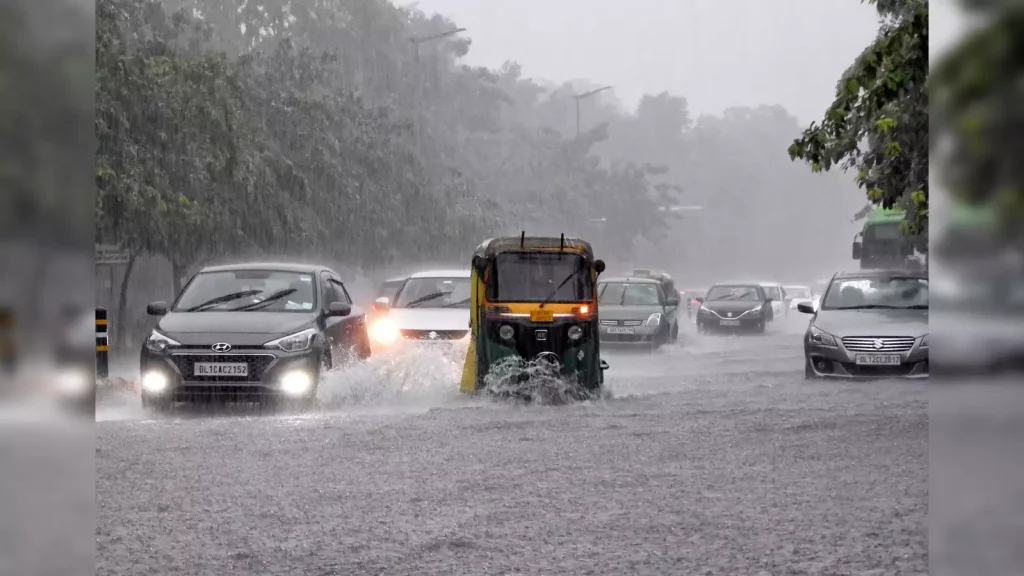Context:
A recent study conducted by the Council on Energy, Environment, and Water (CEEW) sheds light on the evolving rainfall patterns in India.
Findings of the Study:
- The study reveals that 55% of India’s tehsils have experienced a notable increase in rainfall, while approximately 11% have witnessed a decrease.
- Particularly concerning is the decline observed during the critical southwest monsoon, with 68% of the soils experiencing reduced rainfall during the entire monsoon season and 87% showing a decline in the crucial sowing months of June and July.
- The impact is most pronounced in the Indo-Gangetic plains, which contribute to more than half of India’s agricultural production, northeastern India, and the Indian Himalayan region.
- District-level analysis further highlights the disparities, indicating that 30% of India’s districts faced multiple years of deficient rainfall, while 38% encountered excessive rainfall over the four-decade period.
- Notably, 23 districts, including major urban centers like New Delhi and Bengaluru, experienced both extremes, suggesting a growing unpredictability in the country’s weather patterns.
Causes of Changing Rainfall Patterns:
Global Warming:
- Findings indicate a direct correlation between increasing rainfall and global warming. For every degree Celsius of global warming, the study suggests a 5% increase in monsoon rainfall.
Human Activities:
- The burning of fossil fuels contributes significantly to the rise in heat-trapping greenhouse gases.
- Human behavior, including industrial activities, is identified as one of the major drivers of climate change.
Effects on Agriculture and Economy:
Impact on Crops:
- Erratic rainfall patterns pose a threat to agriculture, with rice being highly susceptible to precipitation changes.
- The unpredictability of monsoons makes it challenging for farmers to plan and manage crops effectively. From irrigation planning to pest control, farmers face difficulties in implementing timely and effective practices due to the uncertainty of rainfall.
Food Security Concerns:
- The agriculture sector, constituting nearly 20% of India’s GDP, faces substantial risks.
- Variability in rainfall patterns could lead to food security concerns as crops may be adversely affected.
Economic Stability:
- Agriculture constitutes a significant portion, nearly 15%, of India’s Gross Domestic Product (GDP). The heavy reliance on agriculture for economic output intensifies the impact of changing rainfall patterns on the nation’s financial health.
- Beyond economic figures, the agricultural sector supports the livelihoods of a substantial portion of the population (Nearly 44%). Changing rainfall patterns jeopardize the income and sustenance of farmers, exacerbating the socio-economic implications.
- Uncertainties in crop yields disrupt the agricultural supply chain, impacting downstream industries and markets. This ripple effect can lead to inflation, market volatility, and economic instability at a national level.
Way Forward:
Mitigating Greenhouse Gas Emissions:
- Urgent measures are required to curb greenhouse gas emissions and address the root cause of global warming.
- Transitioning to cleaner energy sources and sustainable practices is imperative.
Adaptive Agricultural Practices:
- Farmers need to adopt adaptive practices that take into account the increasing variability in monsoons. Practices such as crop diversification and climate-adaptive variety of crops can help immensely
- Investment in climate-resilient technologies and improved water management is crucial.
Government Policies and International Collaboration:
- Governments must formulate and implement policies promoting sustainable agricultural practices through farmer education.
- International collaboration is essential for addressing climate change as a global challenge, with shared knowledge and resource allocation.
Research and Innovation:
- Continued research is necessary to deepen our understanding of changing climatic patterns. Innovation in climate-resilient technologies and practices will be key in navigating the uncertainties of an evolving climate.

